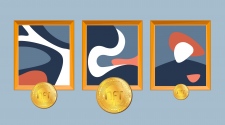There is no single approach to website translation. Every website is unique and should be treated as such. Remember that the whole process is not as simple as translating your web copy into another language: translating your website means adjusting it for a new market.
Rethink Your Message and Presentation
When you get around to the idea of website translation, be prepared to change its content significantly, because a new language can often require a new set of rules. The word order differs from language to language; therefore, the information presented may also have to undergo many alterations before it fits well with the new web copy.
You are strongly advised to take your target audience into consideration, since your website probably includes certain messages you want to get across to your potential customers. So a section that should definitely be translated is your web store, i.e., the part of your site directly responsible for interaction with customers.
Other sections, such as the blog, can be included at a later date, but the web store, as well as the “about” page, should be given priority. Never forget that your revenue depends on those sections.
Research Your Audience
Another point to consider is the language(s) used. Tools such as trend studies can help you explore your audience deeper; thus, it will be much easier to know which languages should be used to cover your entire customer base. Daily and monthly reports can do a great deal for the success of your website translation.
In addition to choosing a language, pay attention to website terminology: sentences should be kept clear, concise and informative. Avoid using colloquial expressions, slang and phrases characteristic of one culture (place names, customs, etc.). Such use can only confuse your potential customers and divert their attention from purchasing your products and services.
Finally, remember that it is not just translation you are working on: it is localization as well. You are making your website both comprehensible and visible to others. That is why it is a good idea to incorporate the services of a native language Search Engine Optimization expert.
Another good idea is to find a translator who is experienced in translating websites; a skilled copywriter or an experienced marketing linguist is always a good choice. That way, you will be well prepared for a new customer base. If you do it wrong, however, you risk losing your market message, and you surely do not want that to happen.
Take Translation Seriously
Website translation is all about delivering a strong, solid vision of yourself and your business, so you should take this process seriously. If the overall meaning is blurred or watered down, your message will fail to reach your targeted audience customers and they will never become customers.
Thus, and all your work will be for nothing. However, if you follow our guidelines and embrace a step-by-step approach, your website will be successfully translated into the intended target language. If you follow these simple guides, you will be better prepared to expand our business to other markets.
By Sarah Detlef
Sarah Detlef is the CEO of 24 Hour Translation. She is a U.S. disabled veteran with more than 20 years of experience in the translation industry. You can follow her business insights on Twitter and Facebook.















